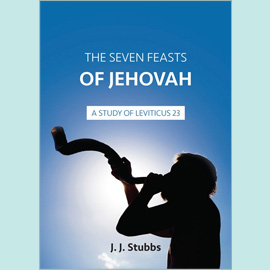There is no subject that grips the heart and mind of Christians more than the cross of the Lord Jesus Christ. The Old Testament foretells it, the Gospels give an account of it, the Epistles teach us much concerning it, and the last book of the Bible, Revelation, shows us the ultimate result of it. No historical event overshadows it; no-one can diminish it. The circumstances surrounding the death and resurrection of Christ have been minutely examined and the question, "Did He really die?", has been dealt with clearly in Scripture. Proofs, clear evidence of His death, are set before us.
Soldiers were responsible for ensuring that prisoners were nailed to a cross. They carried this out under the authority of an officer. There was a time limit set for this to be done on that day when three were crucified. When John wrote his Gospel he stated that the two who were being crucified with the Lord had their legs broken to hasten their death. When the soldiers came to the Lord this was not necessary as "he was dead already" (Jn 19.31-33). This was in accord with the Scriptures: "He keepeth all his bones: not one of them is broken" (Ps 34.20).
The Roman centurion reported to Pilate that the Lord was dead. This man would have been a long time in the army and well used to what he had seen that day. He would have no doubt when he answered Pilate's question "whether he (the Lord) had been any while dead?" (Mk 15.44).
When Joseph of Arithmathæa (Mt 27.57), a secret disciple, and Nicodemus, a Pharisee who had come to Jesus by night (Jn 3.1-21), asked Pilate for the body of Jesus, he allowed it to be taken. They then prepared the body for burial (Jn 19.38-40).
The Jews asked Pilate to allow them to guard the sepulchre for three days. Their reason was that the Lord had stated, "After three days I will rise again". Pilate allowed them: "Ye have a watch: go your way, make it as sure as ye can" (Mt 27.62-66). These discussions with Pilate show that there was no doubt amongst the Jews that the Lord had died.
On the first day of the week women, Mary Magdalene, Mary the mother of James and Salome, came to anoint His body (Mk 16.1). They came at the rising of the sun and discussed the very real problem of how they could open the sepulchre. Equally important was the question of whether they would be allowed so to do? Clearly these godly women had no doubt that the Lord had died. But they would learn more when they saw an open tomb.
Matthew's record of what took place that morning is clear: "And, behold, there was a great earthquake: for the angel of the Lord descended from heaven, and came and rolled back the stone from the door, and sat upon it" (Mt 28.2). Those who were guarding the sepulchre "did shake, and became as dead men" (Mt 28.4), but the message of the angel to the three women was clear: "…ye seek Jesus, which was crucified. He is not here: for he is risen, as he said. Come see the place where the Lord lay".
The two travelling on the road from Jerusalem to Emmaus told another traveller that Jesus of Nazareth had been condemned to death by crucifixion. The amazing news was that the woman who had gone to the tomb had seen an angel who had declared that the Lord was alive. They must have been amazed by the "stranger" who had joined them and who, "beginning at Moses and all the prophets", had expounded the Scriptures to them (Lk 24.13-27).
When the Apostle Paul writes to the Corinthians he declares the truth of the resurrection (1 Cor 15.3-8). "He was seen of Cephas", but unbelievers may say that this was a hallucination. He was "seen of the twelve", but that may be challenged as a collaboration to deceive. However, he was "seen of above five hundred brethren at once", which was overwhelming proof. Most of the five hundred were still alive as Paul wrote. But he has not finished. The Lord, he states, was "seen by James", but again it could be claimed that this was a hallucination. Then He was "seen of all the apostles", but that again may be considered by unbelievers as a further collaboration to deceive. Finally, states Paul, "He was seen of me also", which again was overwhelming proof.¹
The question as to whether He died has been clearly answered in Scripture. Little wonder we cry, "Even so, come, Lord Jesus" (Rev 22.20)!
¹ From the verbal teaching of E W Rogers; January, 1965.









